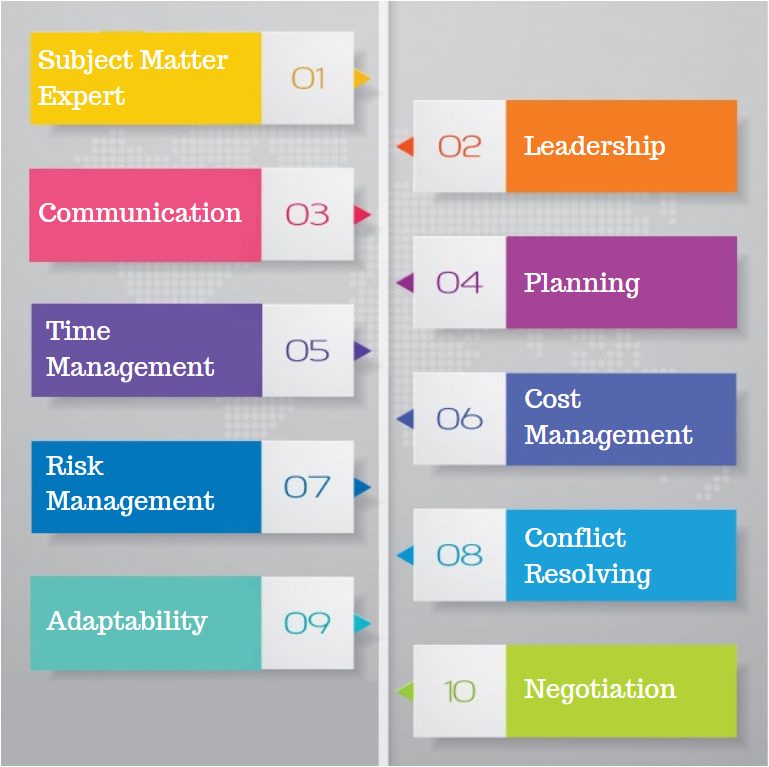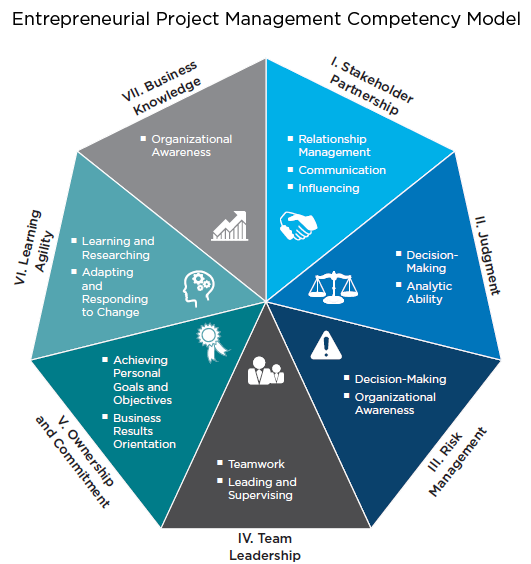If you are a product manager, digital marketer, or an entrepreneur aiming to get your business off the ground, chances are, you are working in a highly matrix team comprised of individuals with different skill sets, in different time zones, and with unique ways of working. Today, knowing how to efficiently lead a team and complete a project is an essential element of success.
How does project management help teams stay engaged and focused to get a project completed? How do we ensure that team members are not overworked, overwhelmed, and constantly deliver peak performance and productivity?
In this article, we will break down why project management matters, the key elements of a successful project management, and the essential skills that every project manager must have.
Why Project Management?
For many years, business leaders have focused mainly in the design and communication of their strategy with its implementation falling to the rest of the organization. Done right, this results to a competitive advantage for the organization, and achievement of business goals and sustainable success. On the other hand, failure to do so can result to frustration from executive management, disengagement from employees, and financial costs to the organization.
Fact: Poor or delayed projects burn money.
In the construction industry, delays happen when a certain project is not completed within the targeted time and budgeted cost as initially planned. Addressing time and cost overruns lead to EXTRA time and cost spent on correcting these mistakes (by using the same resources or by adding additional resources). Additionally, the potential returns not earned due to the delay of the project adds to the opportunity cost.
When creating a new product, teams can come up with tons of ideas / features / functionalities that they hope would add value to a product and its intended user. But the lack of prioritization and shortsightedness on the impact of each feature / functionality can also cause this project to not meet its target, or not realize some business value early on. For one, functionalities require resources and talents to build them. And two, it DOES take time to build them. Building everything can stretch the project, and not knowing what feature / functionality can have the highest business impact may result to lost benefits. (Moreover, if a project suffers from poor execution, teams are not able to move to new projects or initiatives, adding to the opportunity cost of the project team resources.)
To sum, project management is a specialized form of management that allows organizations to effectively implement their strategies and achieve business goals. Poor project execution may result to financial costs, opportunity costs, or fatal outcome when nothing gets delivered.
Today, in the digital space most especially, projects are rolled out on a different level. They are trailblazers and game changers — reaching untapped audiences, creating new markets, and even disrupting industries and long-time incumbents.
What Competencies Are Required from a Project Manager?
Experienced project managers have an arsenal of hard and soft skills that they bring to the role. Every PM utilize these skills depending on the project circumstances, culture of the organization, and team composition. There are, however, three important attributes that I think every project manager should possess. These are project and subject matter expertise, communication skills, and organizational skills.
A project manager must be a project and subject matter expert (SME).
While one can argue that a PM’s skills are transferrable no matter what the project delivers, I am of the opinion that deep domain knowledge is always beneficial.
For example, a project that has a very tight deadline can use a PM’s subject matter expertise to flesh out the issues more quickly. Because the PM has domain understanding, this person is able to understand the terminologies, languages, and nuances of the issues faster compared to someone who will have to do some research prior to coming on board.
Additionally, a PM/SME understands what the workload and processes look like, and this enables him / her to map out processes and the network activity diagram faster. Because of this experience, he / she also knows how to schedule tasks that are sequential or simultaneous, develop the project’s critical path, and assemble the right team of people.
In startup companies, wearing multiple hats most especially when you have tight deadlines or intense phases is common. And a PM with domain expertise can wear the hat of someone who manages the project and someone who helps in tight delivery phases when necessary.
Lastly, a person with background and experience can easily put together information from diverse scenarios, think of dependencies, and exceptions which could be unknown to someone who don’t have the same depth and breadth of experience.
A project manager must be an effective communicator.
As the person responsible to steer the team to a direction and get it in motion, a PM must know how to communicate effectively with clients, stakeholders, and the project team. Project goals, schedule, budget, resource plan, and critical elements of the project are some of the most important pieces of a project and a PM needs to communicate these clearly and logically.
Simply put, communication lubricates the execution.
More often than not, there’s not a single day when a PM will not utilize communication either in spoken or written form. As project status and updates are shared regularly to various stakeholders (executive management, technical teams, customers) and as new knowledge or information arise, PMs have the responsibility to keep the conversation going and keep everyone in the loop.
PMs must always align everybody and ensure that no one gets left out. Hence, communication is key.
A project manager must have thorough and effective planning skills.
An important tool every PM must have is a project charter that is clearly and thoroughly defined. A project charter is an official and written declaration of a project’s name, background, objective, critical success factors, deliverables, resources, funding, milestones, tasks, project organization, structure, and stakeholders roles and responsibilities. It defines what the project is all about and serves as the single source of truth that aligns members about the importance of the project and what everyone’s accountabilities and deliverables will be.
Project Management Phases. Image Source: project-management.com
In addition to the project charter, a PM is also responsible in ensuring that the project is executed through a series of clearly-mapped expectations and goals, with proper checks and balance that prevents the project from getting derailed or to avoid members from getting lost in the hustle and bustle of the actual execution.
What Else is Necessary to Succeed?
In addition to the core competencies mentioned above, project managers should also possess risk analysis and management skills. Risk management refers to the practice of identifying, assessing, preventing or mitigating problems that will have an impact the desired outcomes in any stage of the project lifecycle.
Identifying risks means finding all the factors that threaten the success or completion of any activities that are part of the project. Regular checks have to be done to ensure that a project is on track to meet its objectives.
Assessing risk requires project managers to identify what a potential damage looks like and the likelihood for this to occur. There are a number of potential risks that every project may encounter ranging from lack of executive support, ill-defined scope, inaccurate cost forecasts, lack of a change management system, stakeholder disengagement, undercommunication, project requirements misunderstanding, low team motivation, infeasible design, inflexible architecture, and many more.
In addition to identifying the type of risk / event, it is also important to identify when they are likely to happen, the probability, the impact, and event triggers or warnings. Quantifying the potential damage, having the foresight of warning signs, and having the situational awareness of its probability to occur will enable the team to prioritize the risks and focus their attention to prevent it from happening or tapping a mitigation response when it happens.
Ideally, risks must be prevented from happening as they can derail deadlines and impact the budget. However, if and when they do happen, mitigating these risks means that a proper response to reduce its potential damage is present. Handling problems when they arise and preventing them from happening are hallmarks of an experienced project manager.
Project management is a delicate balancing act. From proper planning and foresight, motivating individual members and steering the team in motion, to finding common ground among different stakeholders, project managers need to use a combination of soft and hard skills to ensure the success of the project. As more and more teams are working on projects that have strategic business importance, executing projects based on proven processes and best practices has now become more important than ever. The stakes are high and for any project that a PM needs to manage, it’s either you make it successful or you don’t.

















